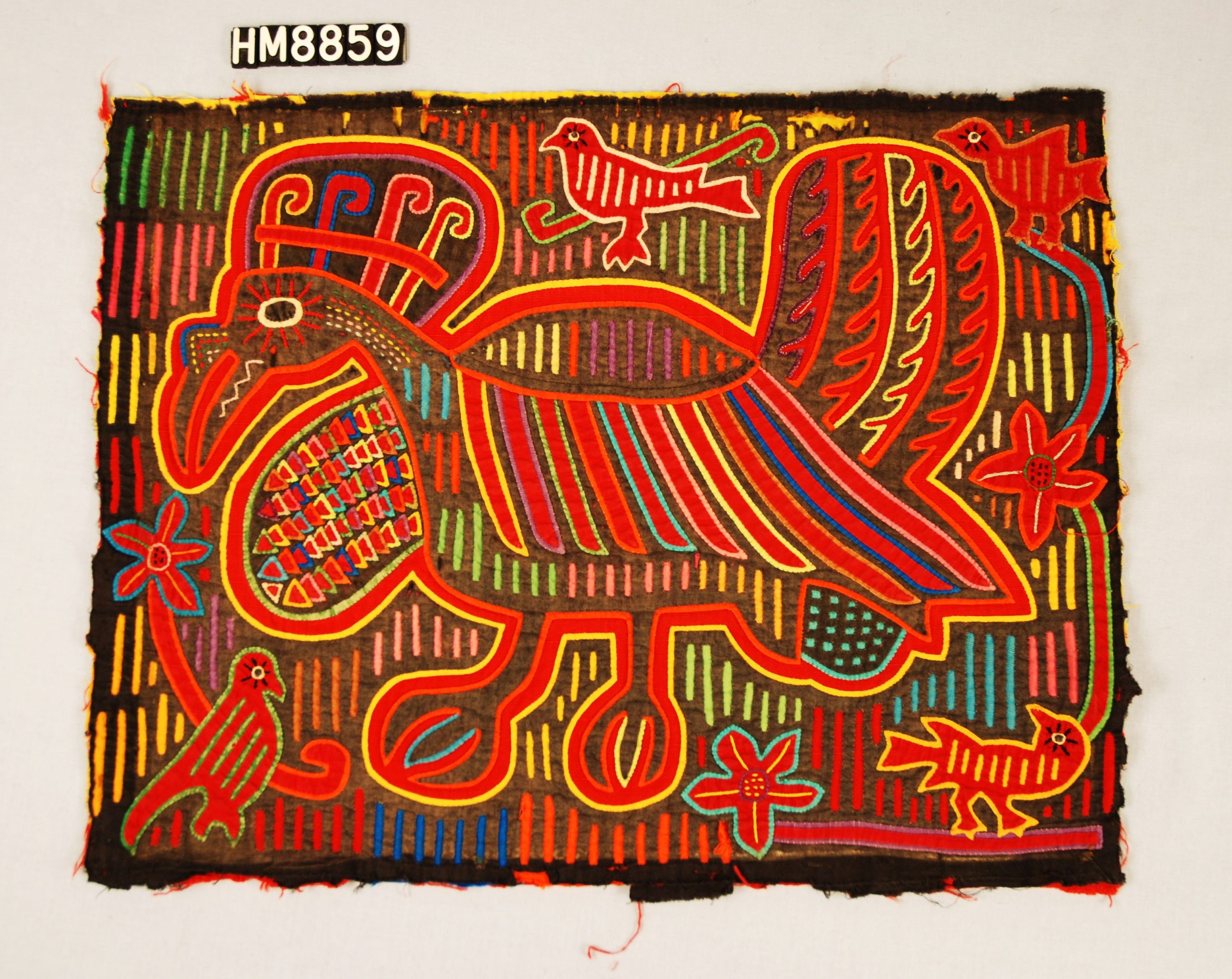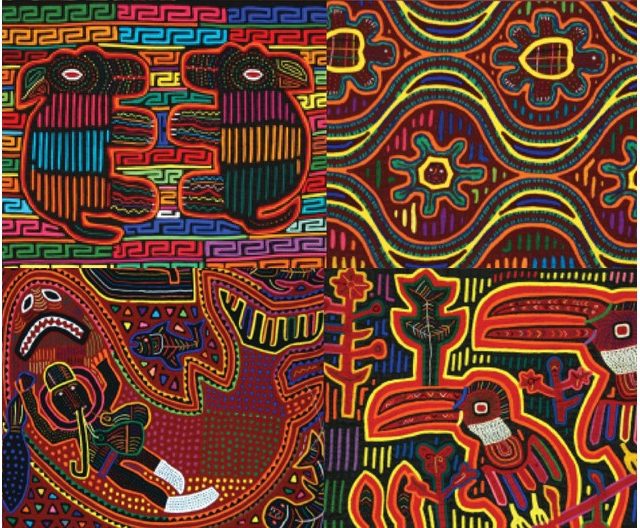For over 30 years, Jane Gruver, “The Mola Lady,” and her husband Dr. Daniel Gruver lived and worked among the Kuna of the San Blas Islands of Panama. Jane acquired a deep appreciation and understanding of Kuna mola making and collected the molas exhibited here to document this tradition. Beginning in 1994, she began to donate molas to the Hudson Museum as a way of recording this artform and the lifeways of the Kuna for the future.
Molas are reverse-appliqued fabric panels made to adorn women’s blouses and were probably derived from body painting of the pre-Conquest era. The design motifs range from local flora, fauna, and sea life to everyday scenes, Kuna legend and myth, magazine ads, political posters, and scenes taken from books. Through these images, the Kuna capture their world in vibrant colors.
For Jane a good mola is one that has a pleasing design and is well sewn. The image fills the entire design field. Molas may include some applique work and embroidery, but the majority of the handiwork must be done in a reverse applique technique. Molas generally feature unusual color combinations that provide high contrast between the different design elements in the mola.
Jane worries about the perpetuation of this tradition as more and more Kuna move from the Islands to Panama City and assimilate into the urban environment. Her search for traditional molas takes her to more isolated islands where women have not abandoned traditional dress. Here, mola blouses continue to be made, worn, and then recycled into mola panels which share the Kuna world with us.
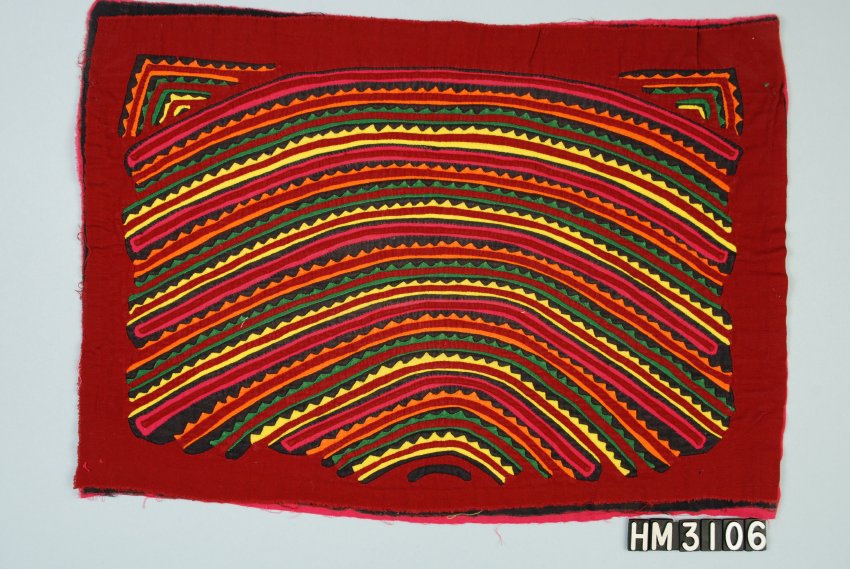
Sunset
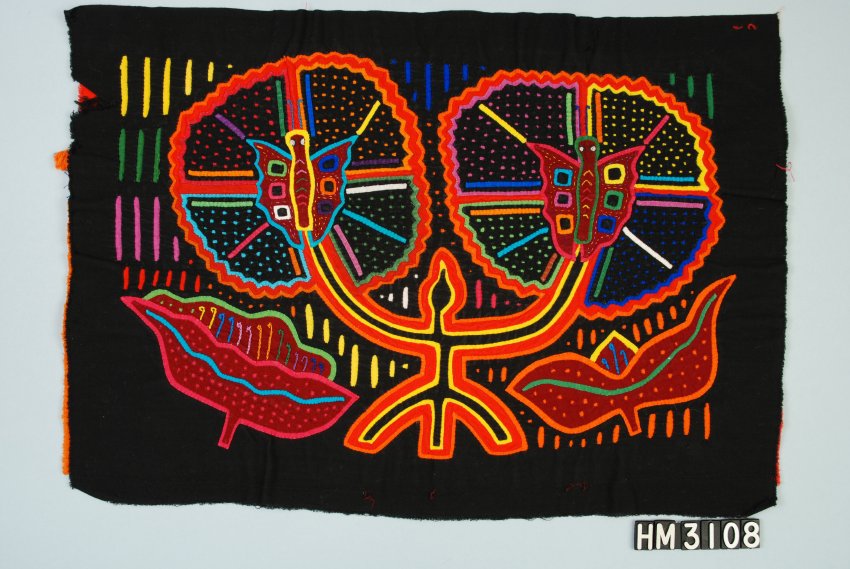
Butterflies on Flowers
In 1992, Jane found this design everywhere and acquired a number of mola panels for her collection. In 1993, she also saw a few blouses with this design, but by the next year, the fad had passed.
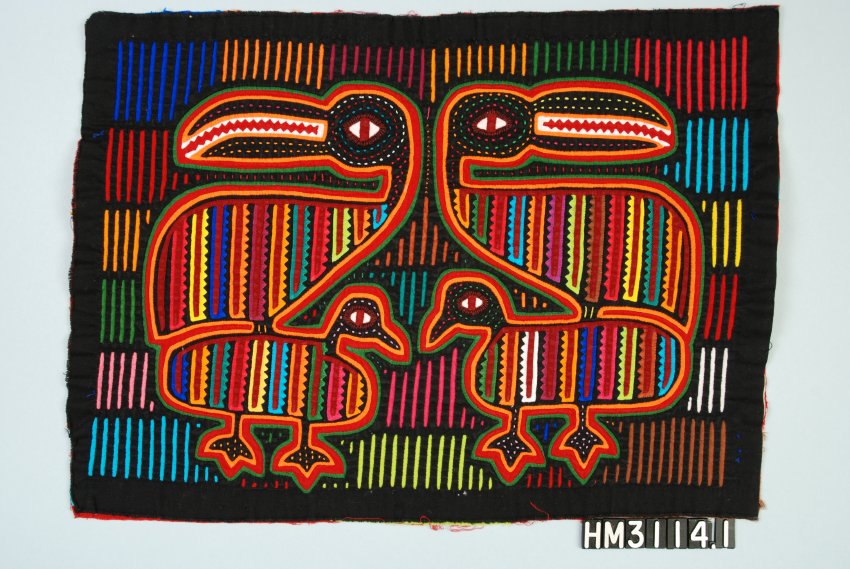
Birds
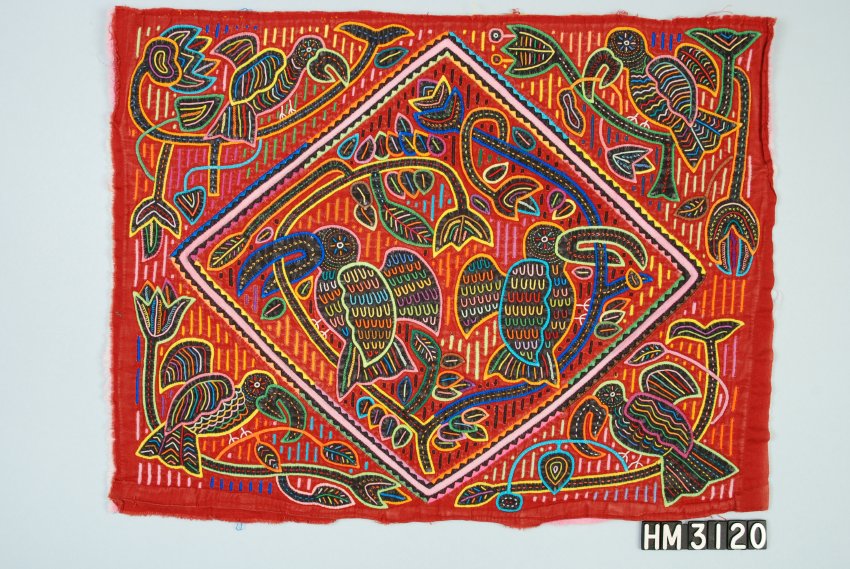
Birds in the Jungle
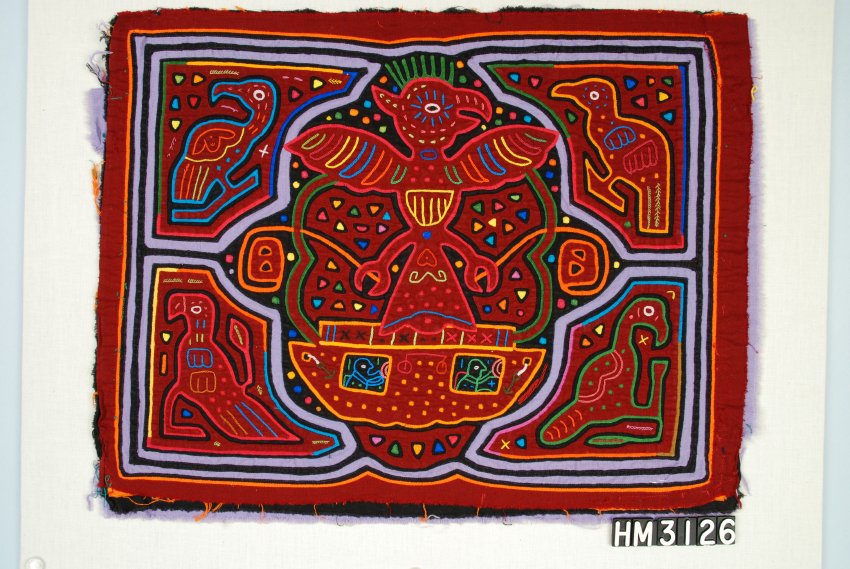
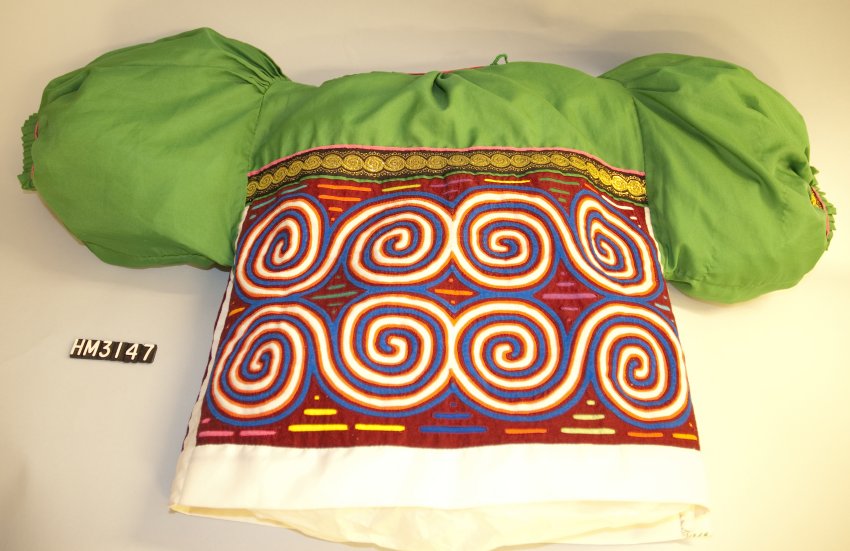
Coral
The design is based on coral in the ocean. The San Blas Island are built on coral and no fresh water can be found on the islands. All water must be carried from the mainland to the islands.
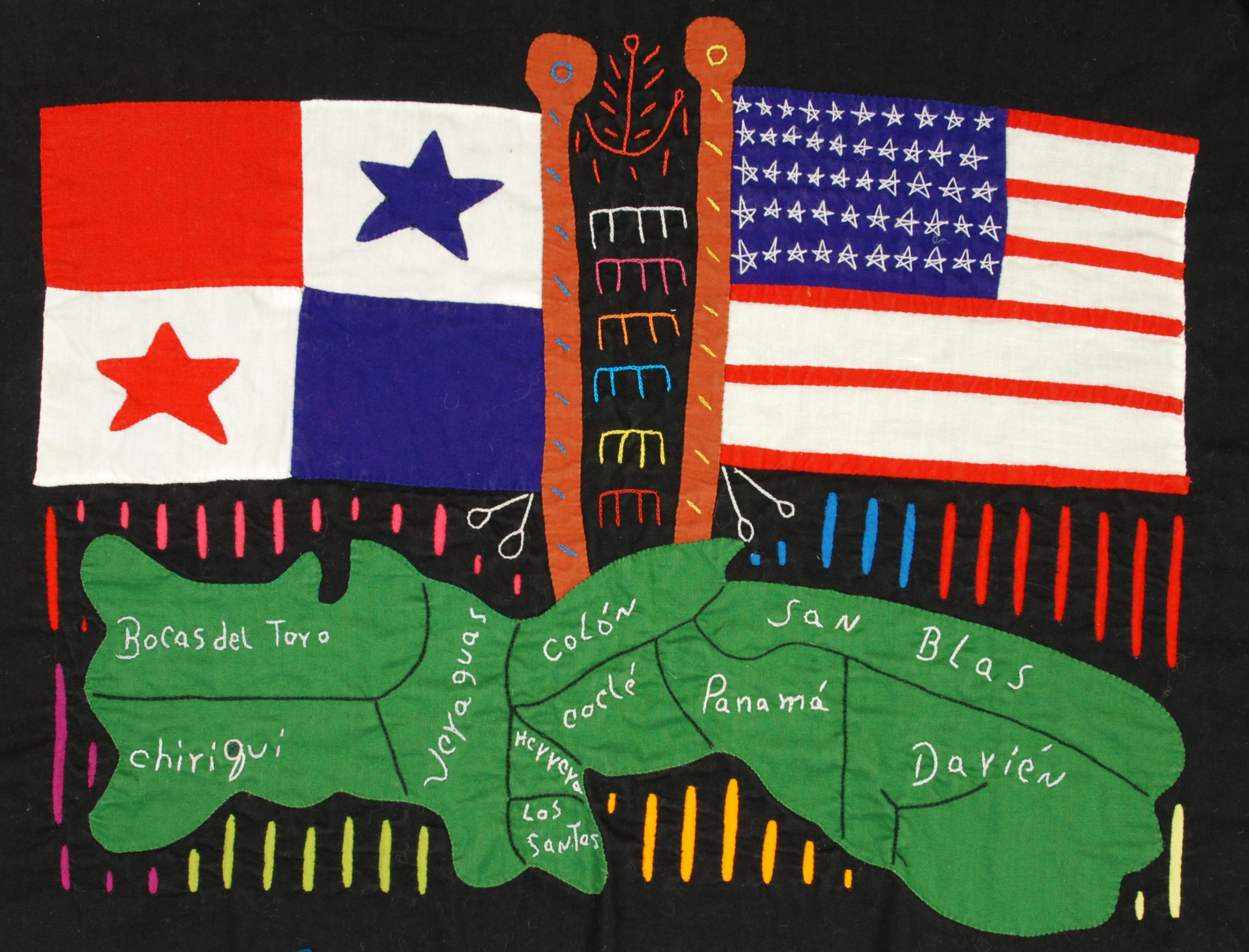
Compact for Justice
According to Jane Gruver this mola was designed after the capture of Noriega and commemorates the United states and Panama working together
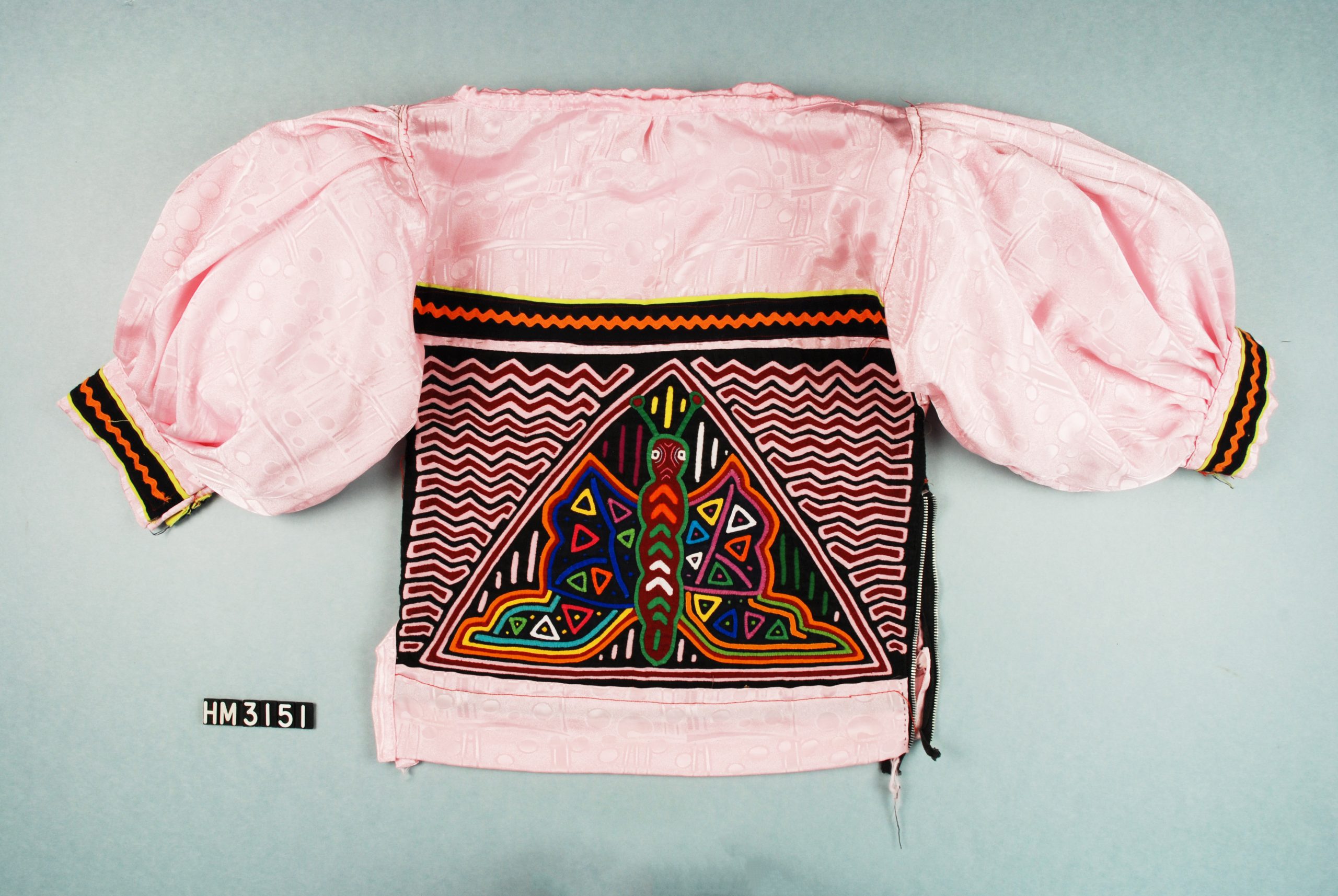
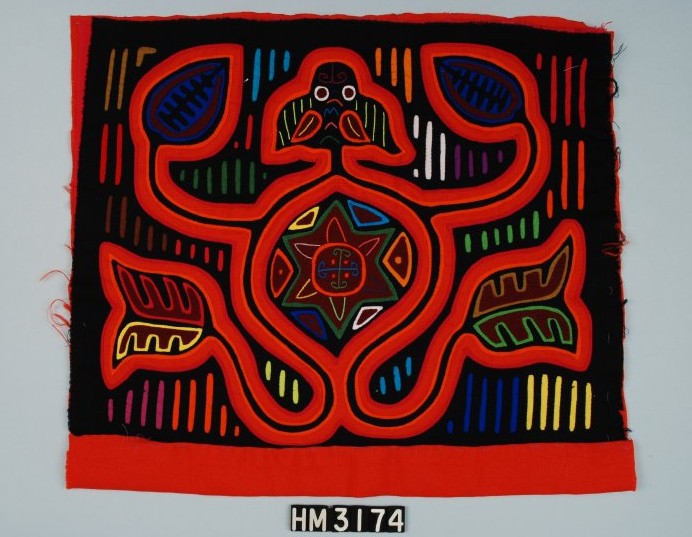
Flower
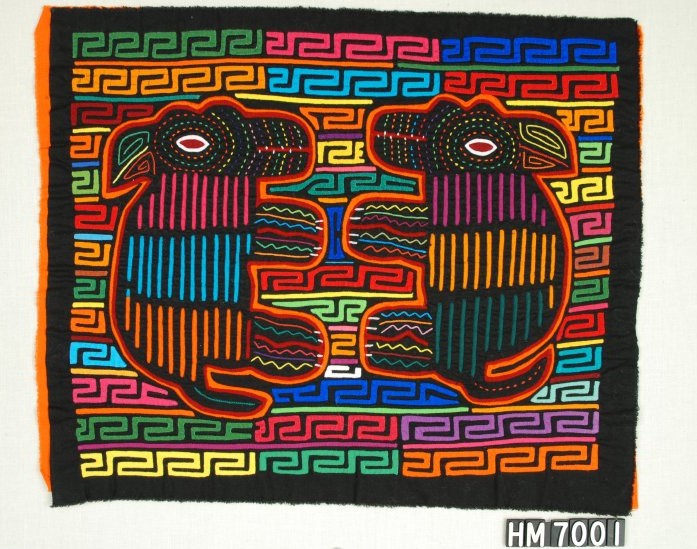
Two Widar or Peccary
The Kuna keep peccary, a pig-like animal native to Central and South America, which provide the community with the bulk of the meat that is consumed.
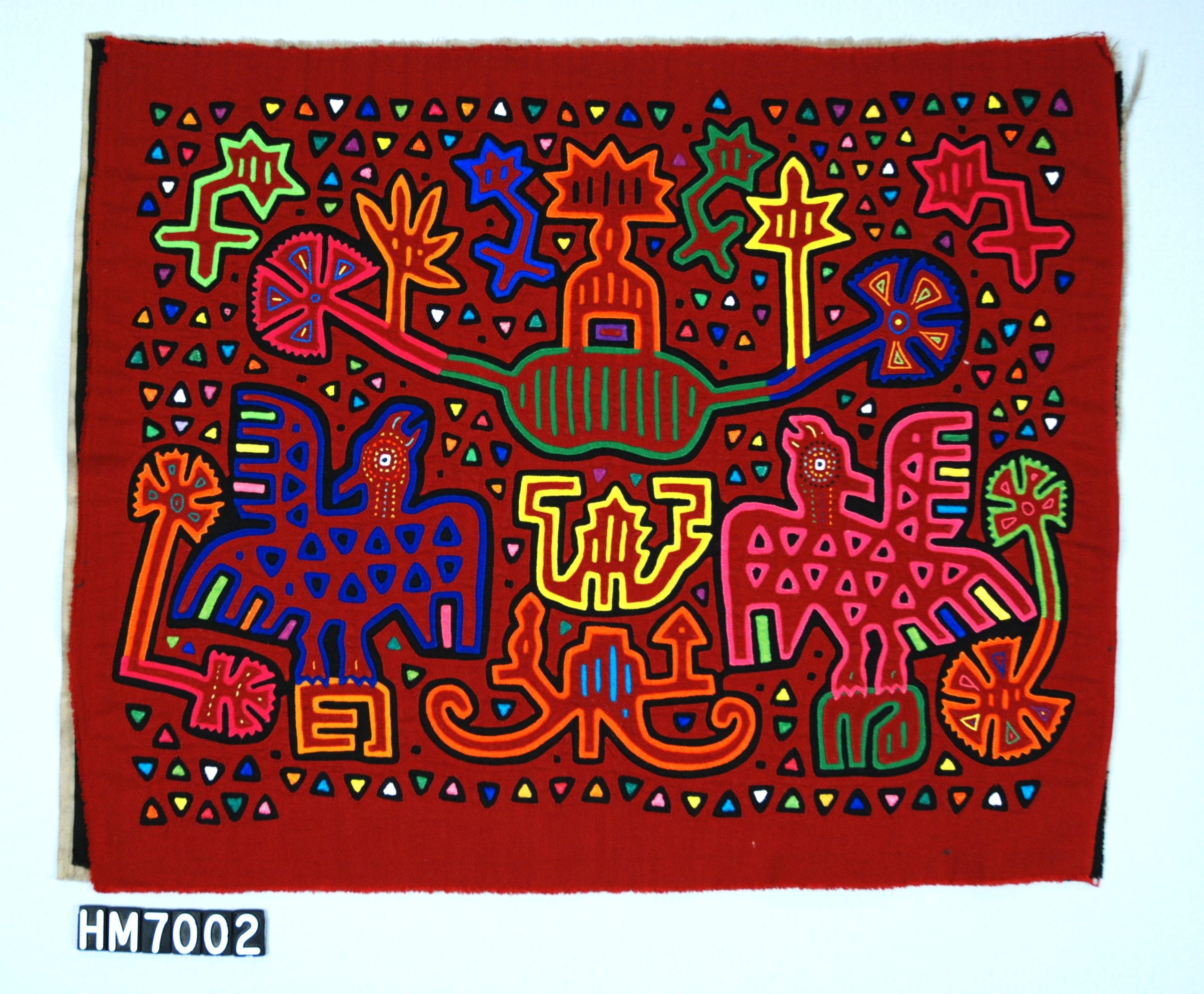
Two Birds in a Thistle Bush
Molas share the Kuna world with others. They commonly depict bird and plant species indigenous to Panama and the San Blas Island.
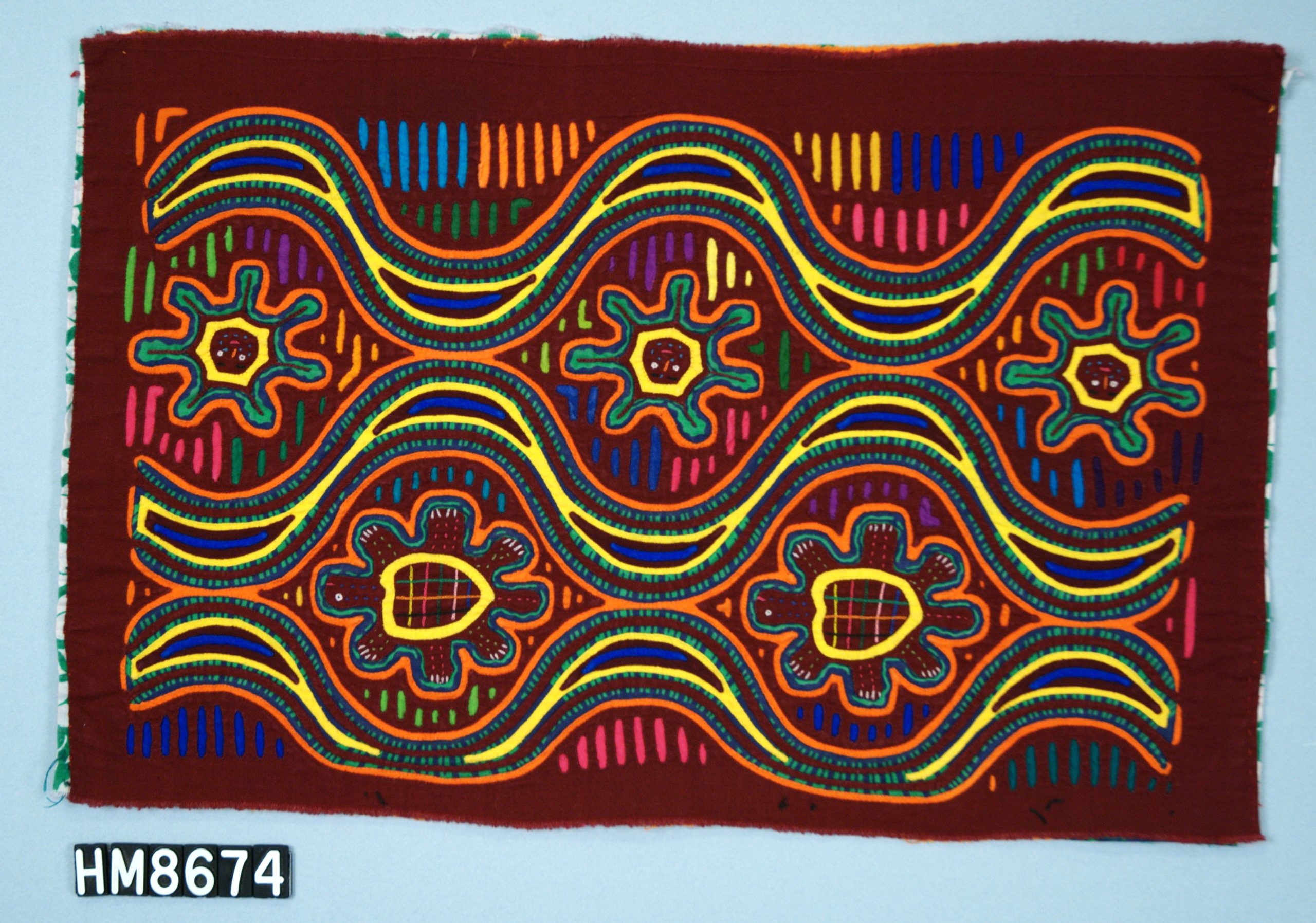

Toucans
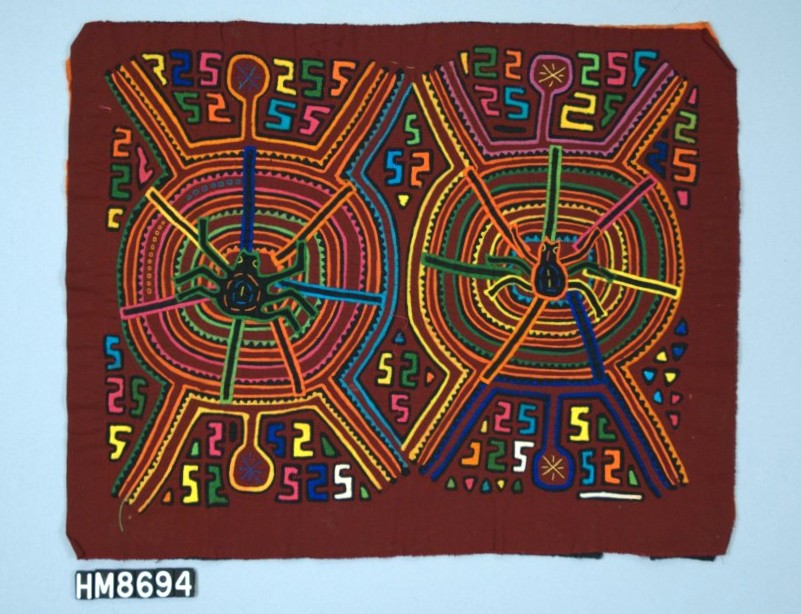
Spider Webs
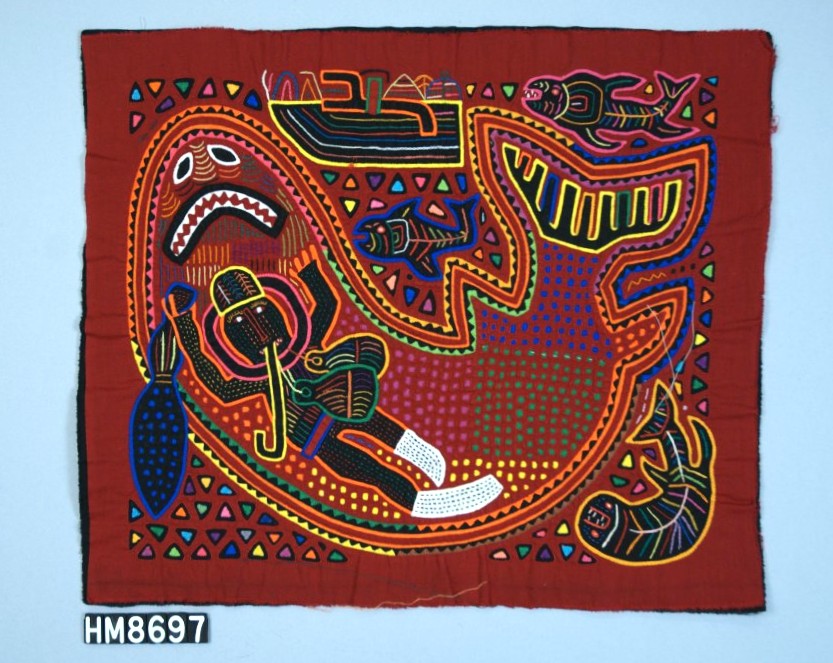
Scuba Diver

Coconut Palm
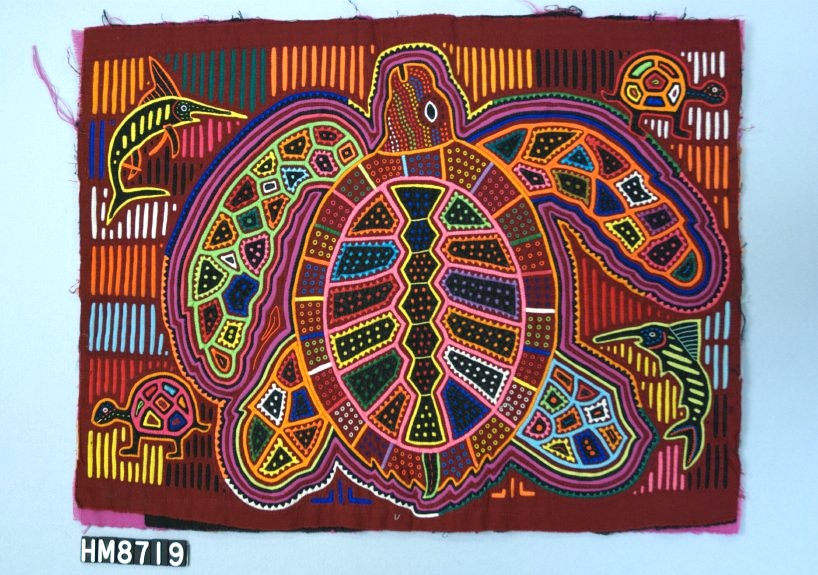
Big Sea Turtle
“This to my mind is the most beautiful of all molas, only to be found on the island of Mulatupu. Even the background figures are superbly sewn. The big sea turtle used to be common around the San Blas but the Kuna like to eat the eggs, so the numbers are declining.”
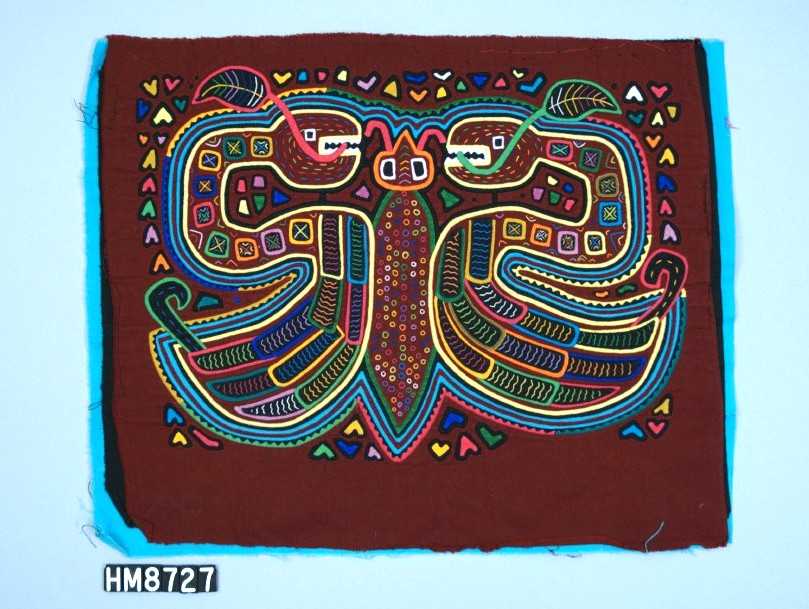
Butterfly – Snake
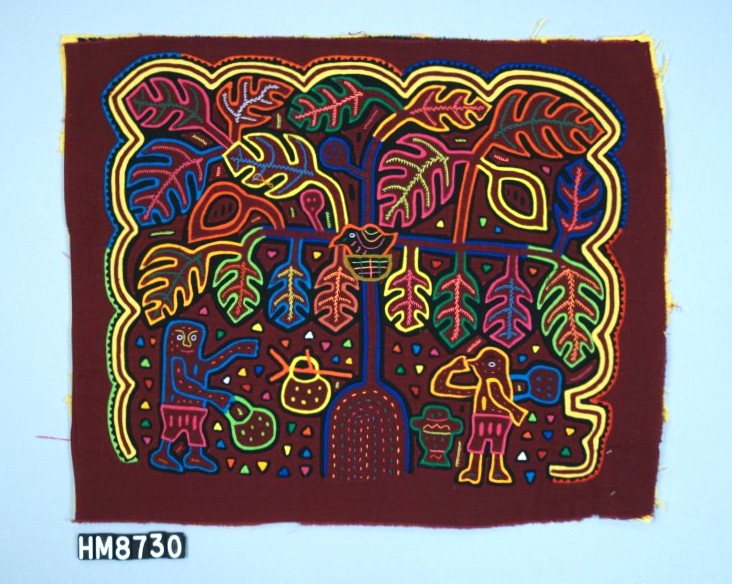
Gathering Sopture
Sopture is the juice of the juniper tree that turns black when it hits the air. The Kuna believe that evil spirits cannot see black objects. So the Kuna paint their babies and the bellies of pregnant women with the black dye to protect them. The juice is gathered by tapping the tree much like maple syrup is gathered.
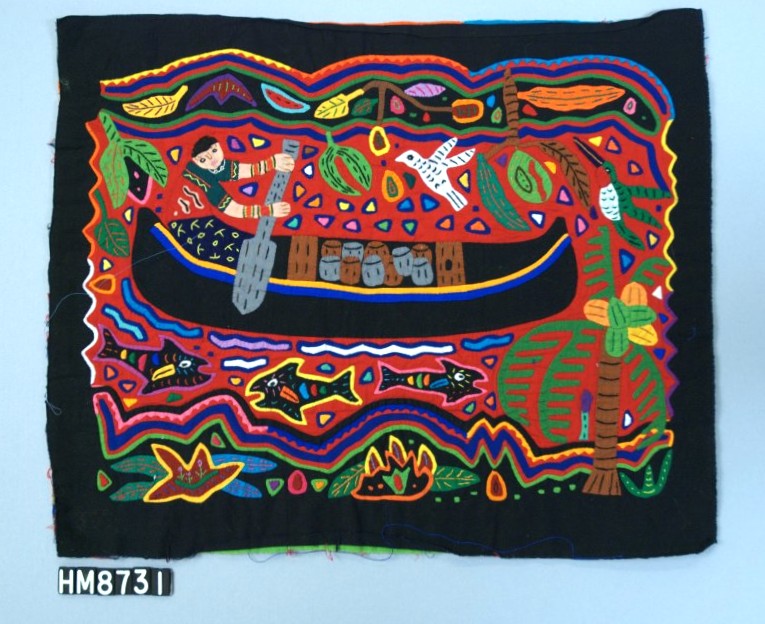
The Water Carrier
“When a baby is born in San Blas, people ask, “Is it a wood chopper or a water carrier?” There is no fresh water on the island, so before the hospital introduced the first modern water system, all water had to be brought by women several times a day from the mainland, in caucus (coats) in gourd bottles.”
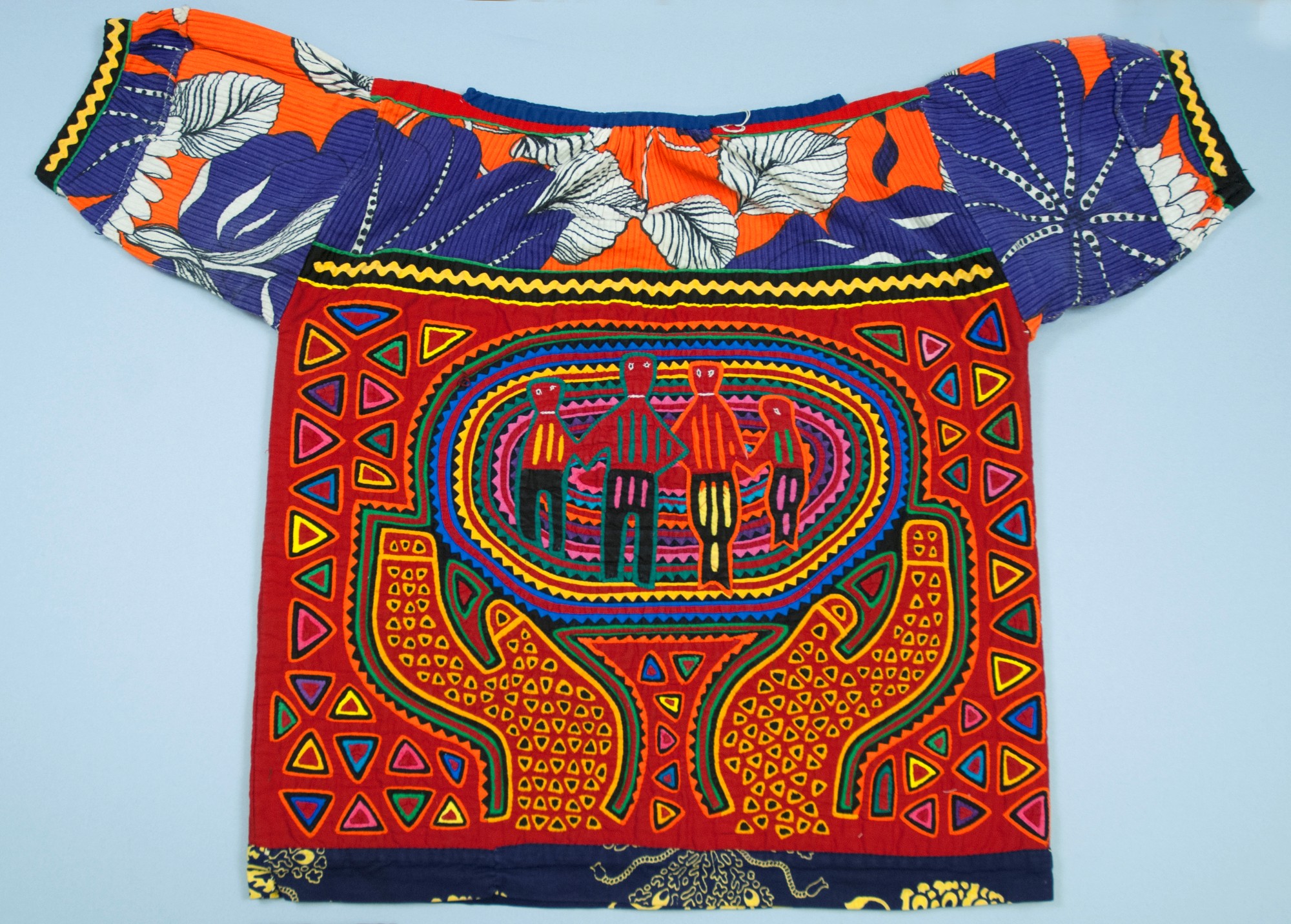
Panamanian Social Security Symbol
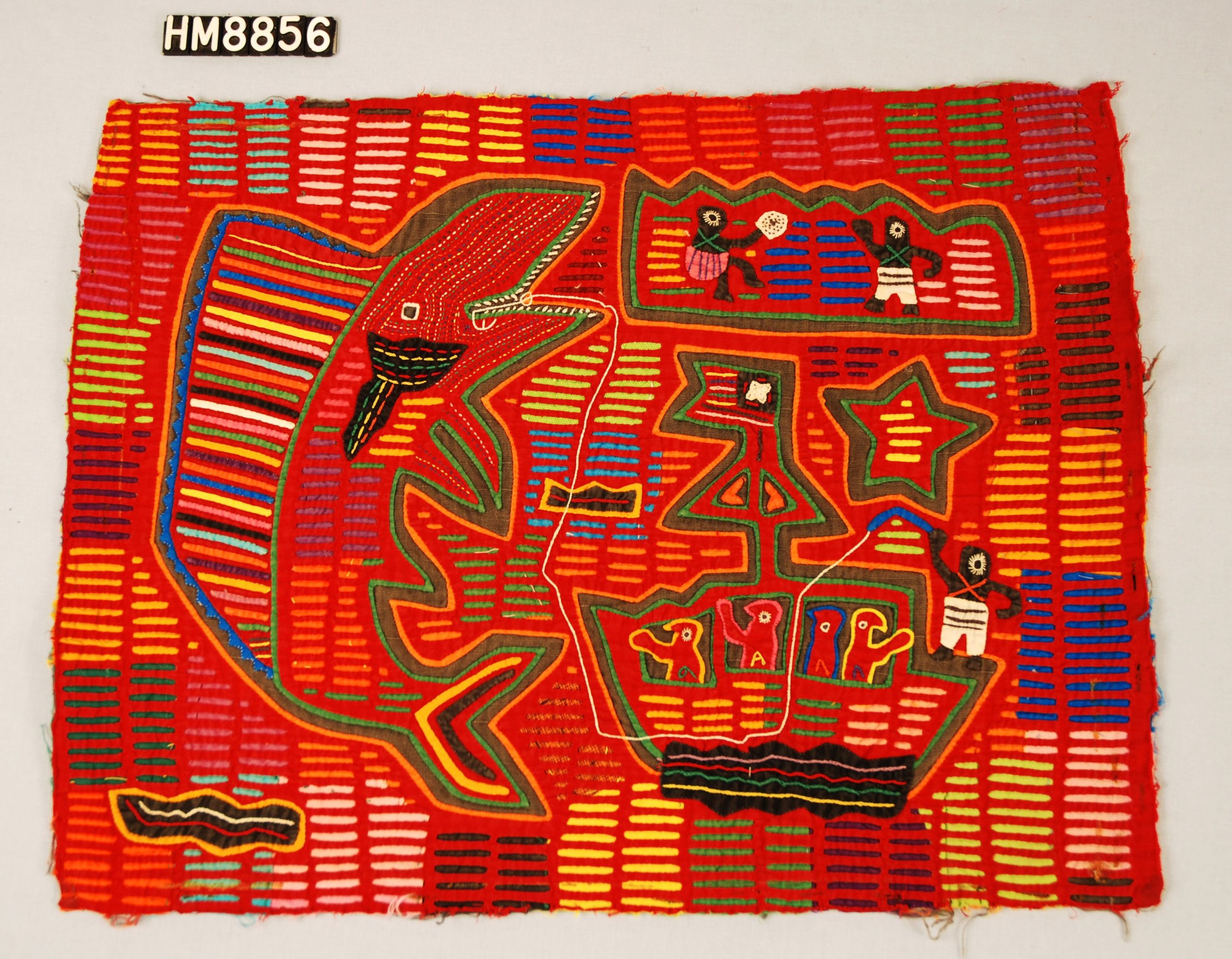
Fishing Scene
